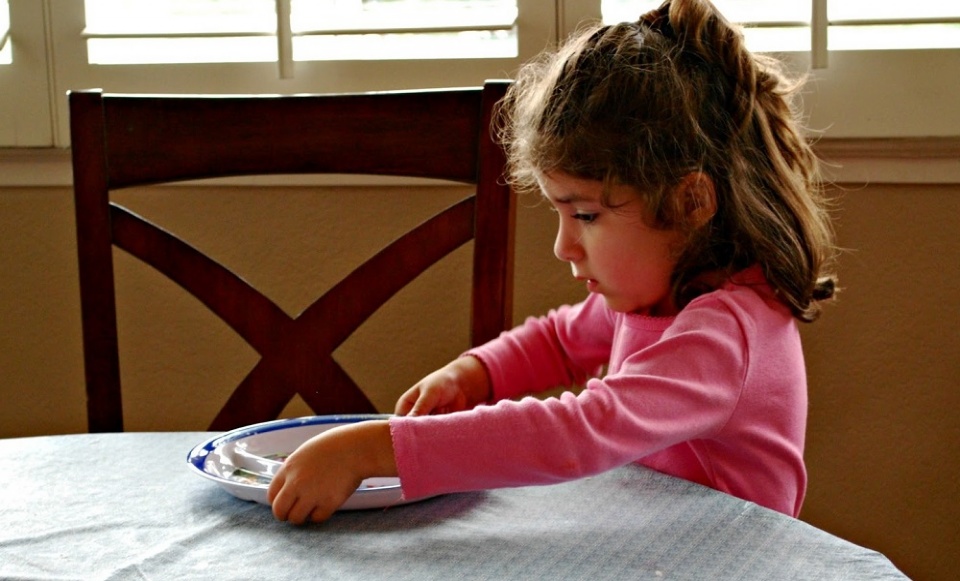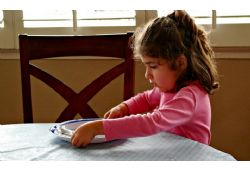Families have more-than-full schedules
these days. Just scrape the top of any parent’s priority list and you will
probably find a heavy job workload, household responsibilities, children to
care for, and extra curricular activities on a daily basis. And that’s only the
top layer.
So when parents ask, “How do we find the
extra time to work on our child’s language development?” my answer is short and
simple; “Let me show you how simple speech therapy can be. No extra time is
needed. Language is already in everything we do.”
Adults are constantly giving children
opportunities to demonstrate their knowledge. What colour is this? What did you
do today? Why did you do that? But for children with language delays, such
questions may be beyond their capabilities to respond. So instead of asking
questions, our focus is on giving them the answers. We do this by describing and
explaining what they are experiencing, by giving them the words and language
they haven’t yet mastered.
Below are two activities that you already
do on a regular basis, and I will describe how you can tweak them to improve
any child’s vocabulary, concept knowledge, and sentence development. Finding a
regular and repeating activity is the key, so that the repetition of language
provides experiences that build on themselves.
As much as parents may struggle to get
their children to eat healthy, all children do eat. When my three-year old son
gets to choose his favourite weekend meal, he always requests the same
sandwich. We make it together, talking through each step to target sequencing
concepts and vocabulary; First, we
get the bread from the fridge. Second we find the almond
butter, and last we take the nutella out of the cupboard. And he is very specific that the nutella must go on top of the almond butter! An older
child can be taught how to set the table; to place the cutlery left and right, napkins going under the forks, placing the glass on
the top corner of the place mat, or aligned with the knife and
spoon.
Another regular activity involves taking a
bath. We can target body part vocabulary and expose them again to the
sequencing concepts of first, second, third and last for shampooing our hair, washing with soap, cleaning in-between our toes and under our fingernails. For an older child, we could describe how the water
goes up the pipes into the overhead
shower, or down the drain and out of the house.
This type of conversation, involving
descriptions and explanations, can be used in any situation. Just remember that
kids learn best when they are having fun, so don’t be afraid to let your
creativity take over. Blow some bubbles with them while they are in the bath.
Add a few drops of food colouring to your rice or mashed potatoes. Let them eat
as many strawberries as they can count. Play the guessing game of making sounds
and figuring out which animal you are imitating. Language is the first, middle
and last part of everything we do. So keep it simple, and keep talking.

 In The Latest Issue:Latest Issue:
In The Latest Issue:Latest Issue:
- Celebrating Community an...
- Celebrating the Unsung H...
- Understanding Newborn St...
Articles
Calendar
Virtual- ANNUAL TEACHER APPRECIATION CONTEST
- APPUI LAVAL
- ARTS & CULTURE
- CAMPS
- CAR GUIDE
- CCIL
- CENTENNIAL ACADEMY
- CHARITY FUNDRAISING
- CITYTV
- COSMODÔME
- COMMUNITY CONNECTIONS
- COVER STORY
- DINA DIMITRATOS
- ÉCOLE SUPÉRIEURE DE BALLET DU QUÉBEC
- EDITORIALS
- ÉDUCALOI
- EDUCATION
- EMPLOYMENT & ENTREPRENEURSHIP
- FÊTE DE LA FAMILLE
- FÊTE DU QUARTIER SAINT-BRUNO
- FAMILIES
- FESTIVAL LAVAL LAUGHS
- FÊTE DE QUARTIER VAL-DES-BRISES
- FINANCES
- GLI CUMBARE
- GROUPE RENO-EXPERT
- HEALTH & WELL-BEING
- 30 MINUTE HIT
- ANXIETY
- CHILDREN`S HEALTH & WELLNESS
- CLOSE AID
- DENTAL WELLNESS
- EXTREME EVOLUTION SPORTS CENTRE
- FONDATION CITÉ DE LA SANTÉ
- GENERAL
- HEARING HEALTH
- MESSAGES FROM THE HEALTH AGENCY OF CANADA
- MENTAL HEALTH
- SEXUALITY
- SOCIAL INTEGRATION
- SPECIAL NEEDS
- TEENS
- THE NUTRITION CORNER
- THE NUTRITION CORNER - RECIPES
- VACATION DESTINATION
- WOMEN'S FITNESS
- WOMEN'S HEALTH
- HILTON MONTREAL/LAVAL
- HOME & GARDEN
- INTERNATIONAL WOMEN'S DAY
- JAGUAR LAVAL
- LAVAL À VÉLO
- LAVAL FAMILIES TV SHOW
- LAVAL FAMILIES MAGAZINE CARES
- LAVAL URBAN IN NATURE
- LE PARCOURS DES HÉROS
- LES PETITS GOURMETS DANS MA COUR
- LEON'S FURNITURE
- LEONARDO DA VINCI CENTRE
- LFM PREMIERES
- LIFE BALANCE
- M.P. PROFILE
- MISS EDGAR'S AND MISS CRAMP'S SCHOOL
- MISSING CHILDREN'S NETWORK
- NETFOLIE
- NORTH STAR ACADEMY LAVAL
- OUTFRONT MEDIA
- PASSION SOCCER
- PARC DE LA RIVIÈRE-DES-MILLE-ÎLES
- PÂTISSERIE ST-MARTIN
- PIZZERIA LÌOLÀ
- PLACE BELL
- PORTRAITS OF YOUR MNA'S
- ROCKET DE LAVAL
- SACRED HEART SCHOOL
- SCOTIA BANK
- SHERATON LAVAL HOTEL
- SOCIÉTÉ ALZHEIMER LAVAL
- STATION 55
- STL
- SUBARU DE LAVAL
- TECHNOLOGY
- TEDXLAVAL
- TODAY`S LAURENTIANS AND LANAUDIÈRE
- TODAY`S LAVAL
- WARNER MUSIC
- THIS ISSUE
- MOST RECENT
Magazine
Language can be everywhere
Simple Speech Therapy Ideas
Articles ~e 105,7 Rythme FM 4 chemins Annual Teacher Appreciation Contest Appui Laval Arts & Culture Ballet Eddy Toussaint Camps THIS ISSUE MORE...
CONTESTS Enter our contests
CONTESTS Enter our contests
CALENDAR
Events & Activities
COMMUNITY Posts Events
PUBLICATIONS Our Magazine Family Resource Directory
LFM BUSINESS NETWORK Learn more
COUPONS Click to save!
COMMUNITY Posts Events
PUBLICATIONS Our Magazine Family Resource Directory
LFM BUSINESS NETWORK Learn more
COUPONS Click to save!
SUBSCRIPTIONS
Subscribe to the magazine
Un-Subscribe
E-NEWSLETTER Subscribe to our E-newsletter Un-Subscribe
WRITE FOR US Guidelines & Submissions
POLLS Vote today!
E-NEWSLETTER Subscribe to our E-newsletter Un-Subscribe
WRITE FOR US Guidelines & Submissions
POLLS Vote today!
ADVERTISERS
How to & Media guide
Pay your LFM invoice
SUGGESTIONS Reader's Survey Suggest a Listing
LFM About Us Our Mission Giving Back Contact Us
SUGGESTIONS Reader's Survey Suggest a Listing
LFM About Us Our Mission Giving Back Contact Us
 PICK-UP LOCATIONS
Get a copy of LFM!
PICK-UP LOCATIONS
Get a copy of LFM!
TERMS & CONDITIONS Privacy | Terms
ISSN (ONLINE) 2291-1677
ISSN (PRINT) 2291-1677
Website by ZENxDESIGN



 BY:
BY: 


Tweet
Share